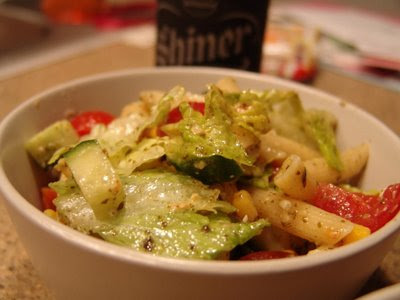 Glögg! What Swedish Christmas would be complete without it? No Swedish Christmas, I say! A lot of countries have their version of mulled wine, specifically ones that get really cold in winter (like the Scandinavian countries and central European ones). In Sweden, you can generally buy glögg with a very low alcohol percentage or that is based on grape juice in any grocery store a few months prior to Christmas. The real stuff, made with red wine and vodka, can be bought ready made at Systembolaget, and the makers generally come up with a variety of flavors for every season. Making your own is easier and cheaper either way, and the added benefit is that you can get the ingredients anywhere and don't have to settle for the alcohol-free version they sell at IKEA.
Glögg! What Swedish Christmas would be complete without it? No Swedish Christmas, I say! A lot of countries have their version of mulled wine, specifically ones that get really cold in winter (like the Scandinavian countries and central European ones). In Sweden, you can generally buy glögg with a very low alcohol percentage or that is based on grape juice in any grocery store a few months prior to Christmas. The real stuff, made with red wine and vodka, can be bought ready made at Systembolaget, and the makers generally come up with a variety of flavors for every season. Making your own is easier and cheaper either way, and the added benefit is that you can get the ingredients anywhere and don't have to settle for the alcohol-free version they sell at IKEA.Glögg is served in a small cup (glass or ceramic) with raisins and slivered almonds. You place the fruit and nuts in the cup and eat them with a teaspoon as you drink the wine. Obviously, you should serve the glögg with pepparkakor, Swedish gingerbread cookies.
Oh, and about the picture above - I made a bunch to give away for Christmas and didn't have any non-bottled glögg to take a picture of. It's supposed to look like red wine. If it looks like anything else, you're doing it wrong.
Glögg
1 bottle dry red wine
1 cup vodka
1/2 cup sugar
2 whole cinnamon sticks
1/2 tbsp cardamom (whole)
1/2 tbsp cloves (whole)
The peel of 1 bitter orange (if you can't find these, a normal orange will suffice)
1 tsp vanilla extract (optional)
Start by grinding the whole spices coarsley. Pour the vodka into a bowl, add the spices, the cinnamon sticks (break them up first) and the peel of the bitter orange. Cover with a lid, plastic wrap, or tin foil and let stand for 24 hours.
Once the 24 hours are up, remove the orange peel and cinnamon sticks, then filter the vodka into a large pot through a coffee filter or similar (a cheese cloth would probably work well). Add the wine and sugar. Turn to very low heat. The slower you heat this, the more alcohol it will retain, and the end result will be much better. Don't boil it. Once brought to a simmer, stir until all the sugar is melted.
Serve in small cups with raisins and slivered almonds.
You can easily double, triple or quadruple this batch and store in dark bottles for about a month. Just make sure you seal them properly and heat gently when it's time to have a cup.
If you do wish to make a virgin version of this, use alcohol-free wine and steep the spices in regular filtered water overnight instead of vodka (use 1/2 cup of water for each bottle of wine).
I've also found that heating the glögg in a slow cooker/crock pot is ideal if you have a lot of people over. Turn to "high" until heated, then keep at "low" and serve straight out of the crock pot - just make sure you turn it off once it's empty! A cracked crock pot is a sad crock pot.
































